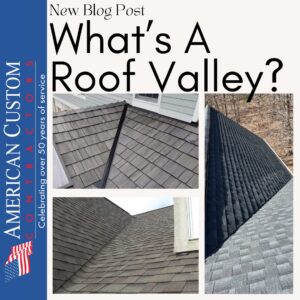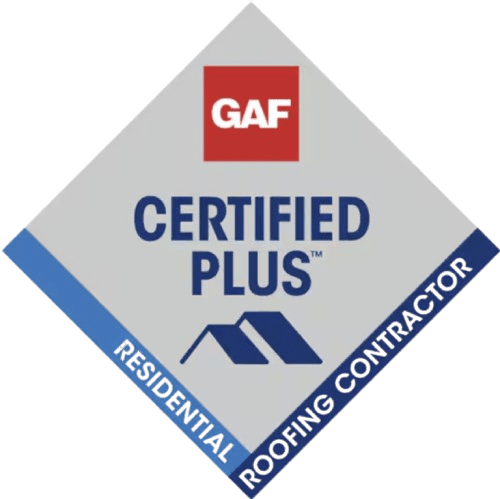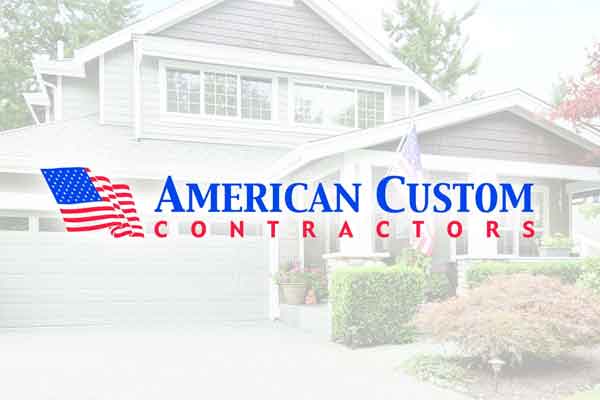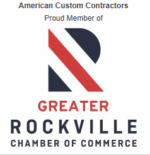Types and their importance in the roofing industry in Tacoma Park, MD

When it comes to roofing, valleys are one of the most critical components of the structure. A roof valley is the internal angle formed by the intersection of two sloping roof planes. These valleys play a crucial role in channeling rainwater and snow to the gutters, preventing water from pooling and causing potential leaks or structural damage.
The type of valley installation used can significantly impact the longevity and effectiveness of a roof. In this article, we’ll explore the different types of roof valleys, their benefits, and why choosing the right one matters—especially in a community like Takoma Park, MD, where weather patterns and architectural preferences come into play.
Open Valleys
Open valleys are one of the most common types of roof valleys. They feature a metal strip, typically made of galvanized steel, aluminum, or copper, running up the valley. Roofing materials are installed on either side, leaving the metal strip exposed. (See the rightmost image above for reference.)
Advantages of Open Valleys:
- Durability: The metal strip adds protection against water infiltration and is resistant to corrosion, especially when premium materials like copper are used.
- Ease of Maintenance: Open valleys are easy to inspect for damage or debris, simplifying maintenance.
- Water Flow Efficiency: The exposed metal channel efficiently directs water to the gutters, minimizing the risk of water backing up under the shingles.
Disadvantages of Open Valleys:
- Aesthetics: The exposed metal may be less visually appealing to some homeowners.
- Cost: The use of metal and the associated installation process can make open valleys slightly more expensive than other options.
Best Use Cases:
Open valleys are ideal for roofs in areas where heavy rainfall or snow occurs. They are especially suited to homes with intricate roof designs like the historic Victorian-style architecture, commonly seen in the Takoma Park, Maryland community.
California Valleys
California valleys use a method where shingles are laid across the valley and onto the opposite side. A shingle layer is then installed vertically up the edge of the valley to cover the edges of the underlying shingles creating a smooth and seamless valley. Finally, the shingle on the opposite side are laid to meet a the edge over the vertical shingle, creating a clean “Cut” edge look. (See the leftmost image above for final appearance.)

Advantages of California Valleys:
- Aesthetics: They provide a clean, streamlined look as there is no exposed metal, blending seamlessly with the rest of the roof.
- Cost-Effective: Since no metal is used, material costs can be lower than those of open valleys.
Disadvantages of California Valleys:
- Durability: Without metal reinforcement, they can be more susceptible to wear and tear, especially in regions with heavy precipitation.
- Water Flow Challenges: Improper installation can lead to water pooling or backing up under the shingles, increasing the risk of leaks.
Best Use Cases:
California valleys work best for homes, where aesthetic appeal is a priority and the climate is moderate, with less risk of heavy rain or snow accumulation.
Closed Cut Valleys
Closed cut valleys are really a hybrid between open and closed valley designs. In this method, shingles on one side are installed normally, while shingles on the other side are cut along the valley line to overlap the first layer.
Advantages of Closed Cut Valleys:
- Aesthetic Appeal: They provide a cleaner appearance than open valleys while maintaining structural integrity with overlapping shingles.
- Versatility: Compatible with most shingle types and roof designs.
- Durability: The overlapping shingles add protection against water infiltration, similar to California valleys.
Disadvantages of Closed Cut Valleys:
- Complex Installation: Precision cutting and proper installation are required, which can increase labor costs.
- Potential Weak Points: If not installed correctly, the cut edges may become vulnerable to water infiltration.
Best Use Cases:
Closed cut valleys are ideal for homes in Takoma Park, MD, where both aesthetics and durability are important. They’re particularly effective for areas with moderate to high rainfall.
Why the Choice of Roofing Valley Matters in Takoma Park, MD
The type of roofing valley selected for a project can have significant long-term implications for the roof’s performance and durability. Here’s why it’s so important, particularly in Takoma Park:
1. Water Management –
Proper water drainage is critical to prevent leaks and structural damage. The right valley type ensures efficient water flow, reducing the risk of pooling—a key consideration in Takoma Park’s humid climate.
2. Durability –
Different valley types offer varying levels of protection against the elements. For example, open valleys with metal reinforcement are highly durable in the wet and snowy conditions often seen in the area.
3. Aesthetic Impact –
In a community like Takoma Park, where historic homes and architectural charm are prevalent, the visual appeal of a roof is vital. Choosing the right valley type ensures that the roof complements the home’s design.
4. Cost Considerations –
Budget plays an important role in roofing decisions. While some valley types may have higher upfront costs, they often provide better long-term value by reducing maintenance needs and extending the roof’s lifespan—a smart investment for local homeowners.
Conclusion
Roofing valleys are a fundamental component of any roof, and choosing the right type is critical for both functionality and aesthetics. Whether you’re prioritizing durability, visual appeal, or cost, understanding the differences between open, California, and closed cut valleys can help you make informed decisions.
For homeowners in Takoma Park, MD, selecting the appropriate valley type ensures optimal performance and longevity, protecting your home from the elements while maintaining its curb appeal.
When details matter, the right roofing valley installation can make all the difference details matter, the right valley installation can make all the difference.
Stay Informed!
Related Articles: How to Determine the Ideal Gutter Size for Your Home






























